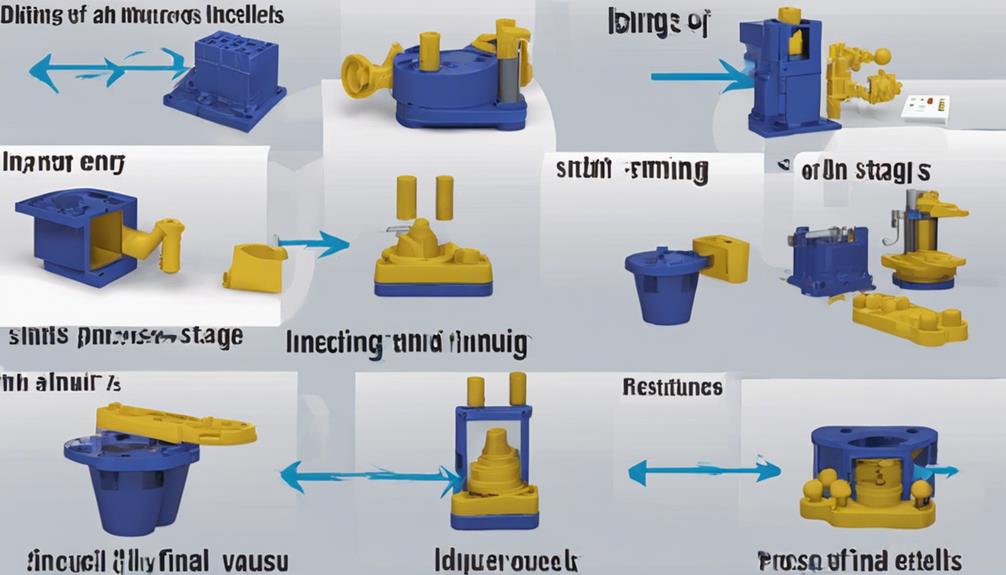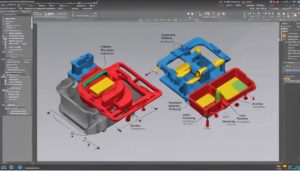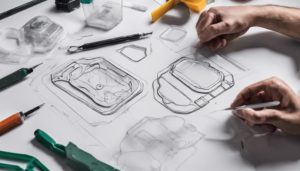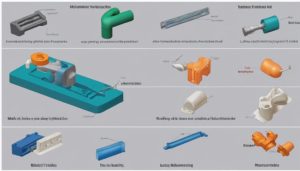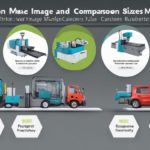Injection molding is a vital manufacturing process where molten material is injected into a mold cavity to create intricate parts efficiently. Ideal for mass production, it can produce complex shapes with high accuracy. Selecting the right thermoplastic material and mold is essential for quality results. The process involves precise injection, high pressure, and cooling for final product formation. Ejection and finishing stages guarantee the components are ready for distribution. Different types cater to varied product needs. Pros include high precision and material versatility. Cons involve initial costs and waste generation. It is one of the preferred methods across industries due to its efficiency and flexibility.
Definition of Injection Moulding
Injection molding, a core process in manufacturing, is a method of fabricating products by injecting molten material into a meticulously crafted mold cavity. The molten material, typically plastic, is forced into the mold under high pressure. Once inside the mold cavity, the material cools and solidifies, taking the precise shape of the mold. This process is ideal for mass production as it allows for the rapid and consistent creation of identical parts.
One of the key advantages of injection molding is its ability to produce products with complex shapes and designs. The versatility of this process makes it suitable for a wide range of industries, from automotive to consumer goods. Companies often choose injection molding for its cost-effectiveness and efficiency in creating high volumes of plastic components. The ability to achieve intricate geometries and tight tolerances makes injection molding a popular choice for manufacturing a variety of products.
Process of Injection Moulding
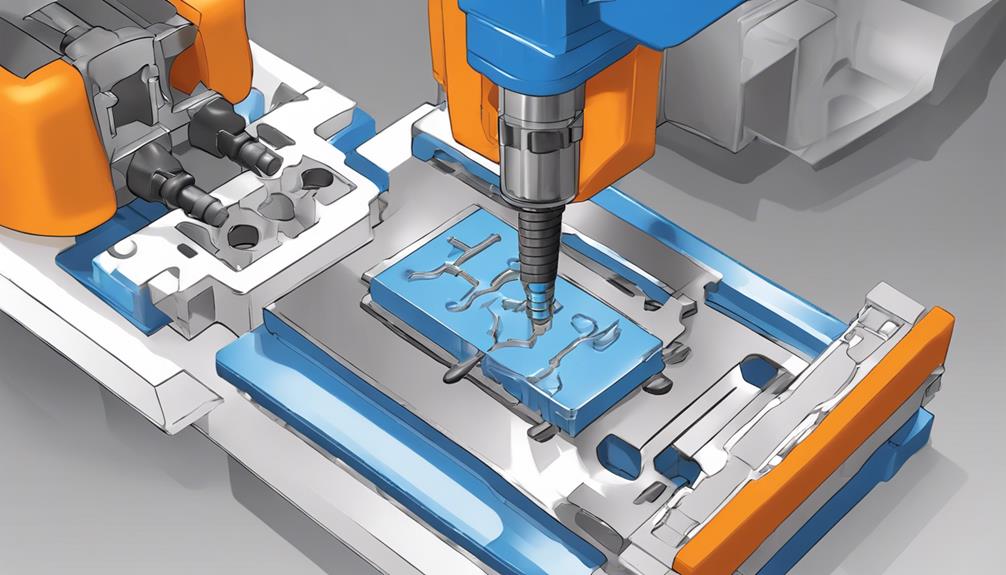
The molding process involves the precise injection of molten plastic into a carefully crafted mold cavity to create intricate components. During the injection molding process, the molten plastic is pushed into the mold cavity under high pressure. This high pressure guarantees that the molten plastic takes the shape of the mold accurately, resulting in detailed and complex components.
Once the molten plastic is inside the mold cavity, it is left to cool and solidify. The cooling process is essential as it determines the final shape and properties of the plastic part. Once the plastic has solidified, the mold opens, and the newly formed component is ejected.
Injection molding is favored for its ability to produce intricate and detailed parts with high accuracy and consistency. Its efficiency and cost-effectiveness make it a widely used manufacturing process across various industries. The process of injection molding enables the production of components ranging from small, intricate parts to larger, more complex structures.
Selection of Thermoplastic and Mold
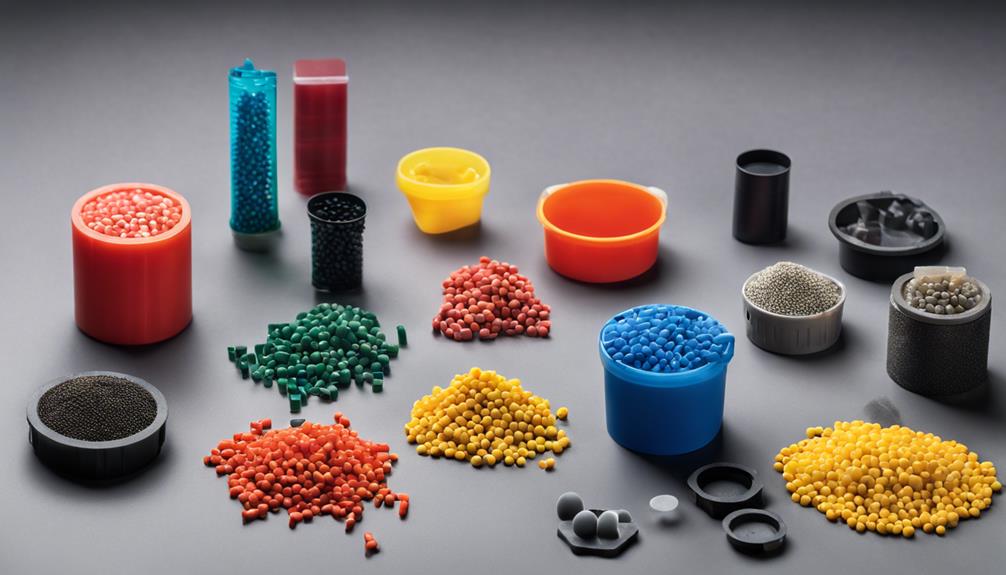
Selecting the appropriate thermoplastic material is a critical decision in injection molding. Factors such as material properties and application requirements heavily influence the process. Equally important is the consideration of mold design. This encompasses material selection and complexity, as these aspects greatly impact the quality and performance of the final product.
Prototyping and testing procedures also play a crucial role in this process. They often involve CAD and 3D printing technologies and are essential for evaluating the compatibility between the chosen thermoplastic and the specific mold design.
Thermoplastic Properties
Utilizing thermoplastic properties in injection molding requires a meticulous consideration of the material selection and mold design to guarantee excellent production outcomes. When it comes to thermoplastic properties, the materials used play a critical role. Materials like ABS, Nylons, Polycarbonate, and Polypropylene are commonly chosen for their flexibility and durability in the injection molding process.
Mold tools, including the mold cavity and core, are essential components developed using CAD and 3D printing technology. Thermoplastics possess mechanical properties that enable them to be melted, injected into molds, and solidified, making them ideal for material injection in the molding process. Understanding these characteristics is key to optimizing the injection molding process and ensuring high-quality finished components.
- Materials like ABS, Nylons, Polycarbonate, and Polypropylene are commonly used for their flexibility and durability.
- Mold tools, including the mold cavity and core, are developed using CAD and 3D printing technology.
- Thermoplastics possess mechanical properties that allow them to be melted, injected into molds, and solidified.
- Understanding the characteristics of different thermoplastics is essential for optimizing the injection molding process.
Mold Design Considerations
Considerations for designing molds in injection molding encompass critical decisions regarding the selection of appropriate thermoplastic materials and mold configurations to guarantee excellent production outcomes. Selecting the right thermoplastic, such as ABS, Nylons, Polycarbonate, or Polypropylene, is essential for successful injection molding.
Mold design considerations involve prototyping and testing with CAD and 3D printing technologies to ensure compatibility with the chosen thermoplastic. Testing the mold with the appropriate thermoplastic material is vital to validate the design and functionality before production.
Mold tools, including mold cavities and cores, are developed using advanced technologies like CAD and 3D printing to ensure precision and accuracy. Proper selection of thermoplastic and mold materials is fundamental for achieving high-quality, consistent, and cost-effective injection molding results.
Feeding and Melting Thermoplastic
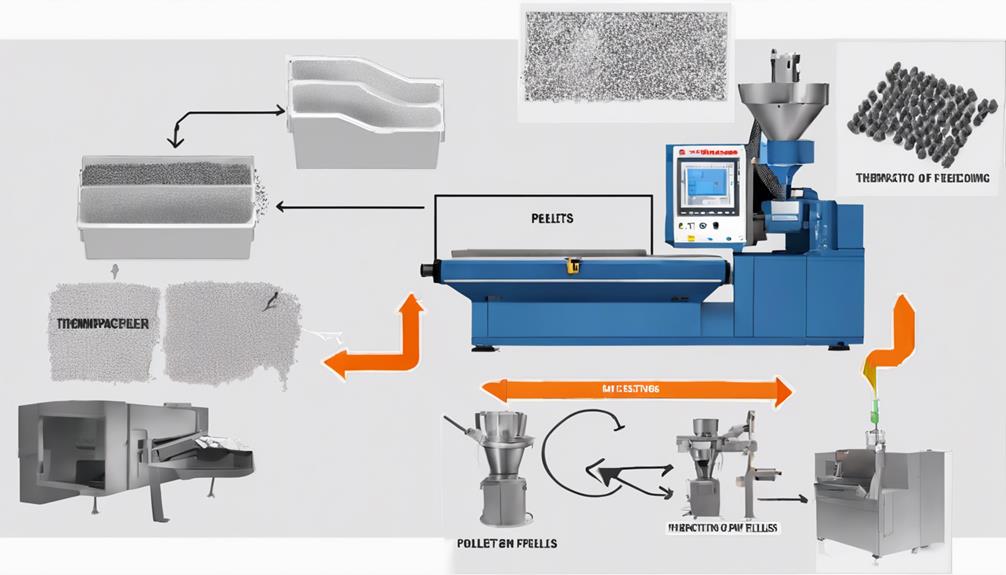
The feeding process involves the controlled delivery of thermoplastic pellets into the hopper, ensuring a consistent supply for the melting stage.
Understanding the optimal melting temperature of the thermoplastic being processed is crucial for achieving quality injection-molded parts.
The heating and melting mechanism within the barrel is carefully regulated to transform solid pellets into a molten state ready for injection.
Material Feeding Process
Precision in temperature control is paramount during the material feeding process of injection molding to guarantee the successful melting and injection of thermoplastic material. In this process:
- Raw plastic pellets are fed into the machine's hopper.
- The screw inside the machine gradually heats and melts the thermoplastic material.
- Maintaining precise temperatures is vital for successful injection molding.
- The gate controls the flow of molten plastic into the mold cavity.
These steps are essential for ensuring the proper feeding and melting of thermoplastic material in the injection molding process, ultimately leading to high-quality finished products.
Thermoplastic Melting Temperature
When addressing the thermoplastic melting temperature in the injection molding process, achieving and maintaining precise heat levels is fundamental to ensuring successful material transformation and cavity filling.
Thermoplastic pellets are fed into the hopper of the injection molding machine, where the heated barrel and injection screw gradually elevate the thermoplastic to its melting temperature. Proper temperature control is critical for the efficient injection of the molten thermoplastic into the mold cavity through the gate.
Maintaining specific melting temperatures is essential for the material to flow correctly into the mold, ensuring the final product's quality and integrity. Monitoring and adjusting the melting temperature throughout the injection process is vital for achieving excellent results in injection molding operations.
Heating and Melting Mechanism
Utilizing a controlled heating and melting mechanism is crucial for effectively processing thermoplastic materials in injection molding operations. This process involves several key components:
- Heating Bands: These are used to maintain a consistent temperature within the barrel to guarantee the thermoplastic material reaches the desired melting point.
- Thermoplastic: The raw plastic pellets are gradually heated and melted to form a molten state suitable for injection.
- Pressure in the Tool: Once the thermoplastic is melted, it is injected into the mold cavity under pressure to ensure complete filling and accurate shaping.
- Melted Plastic: The molten plastic is then shaped within the mold to create the final product, taking advantage of its temperature resistance properties for durability.
Injection of Plastic Into Mold
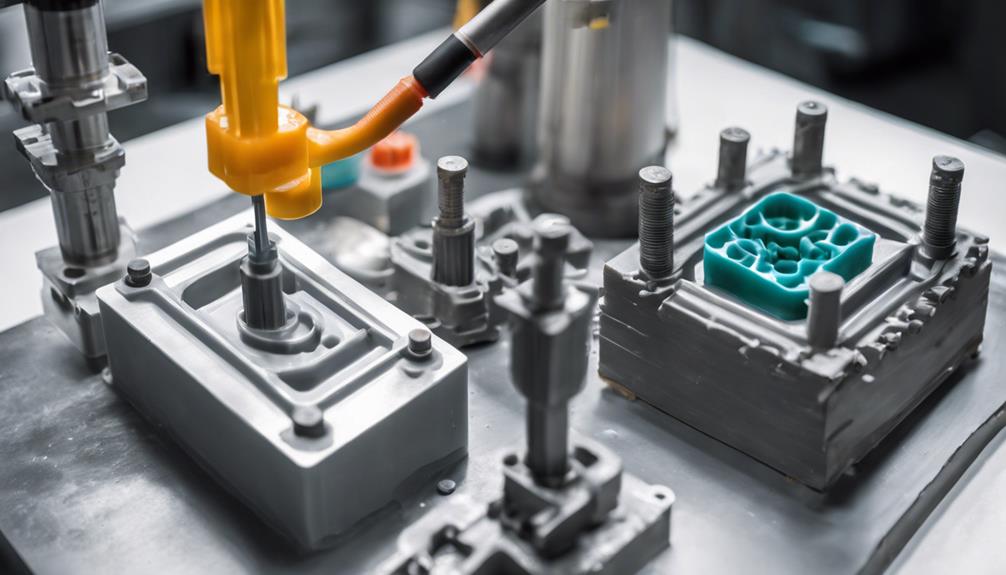
During the injection molding process, the injection of molten plastic into the mold cavity is a critical stage that guarantees the precise formation of the desired plastic component. This step involves injecting the molten plastic material into the mold cavity under pressure to secure complete filling. The pressure applied helps in pushing the molten plastic into all intricate details of the mold cavity, ensuring a high-quality final product.
Once the mold cavity is filled, the cooling phase begins. Cooling allows the molten plastic to solidify within the mold, taking the shape of the cavity. An ejection system is then utilized to remove the cooled plastic component from the mold after solidification. This process needs to be carefully controlled to prevent defects such as warping or incomplete filling.
The injection of plastic into the mold is a precise and critical phase in achieving the desired plastic component accurately.
Holding and Cooling Time
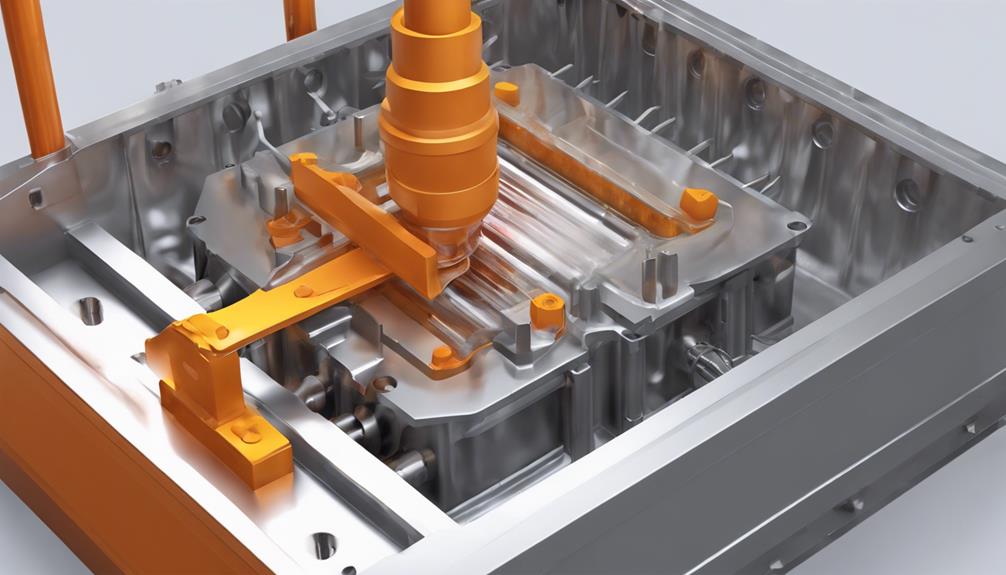
Key holding and cooling times play a critical role in ensuring the quality and integrity of injection-molded components. During the injection molding process, the holding time varies depending on the type of thermoplastic material utilized. This phase is essential as it facilitates the proper packing of the plastic material within the mold, preventing defects and ensuring the final part's shape and structural integrity.
Once the holding phase is completed, the screw retracts, allowing for the necessary cooling time for the plastic to solidify. Achieving high-quality injection-molded components hinges on the precise management of both the holding and cooling times. Maintaining ideal temperatures and durations during these phases is essential to produce parts that meet the desired specifications and quality standards.
Proper attention to the holding and cooling times is fundamental for the success of the injection molding process and the final product.
Ejection and Finishing Processes
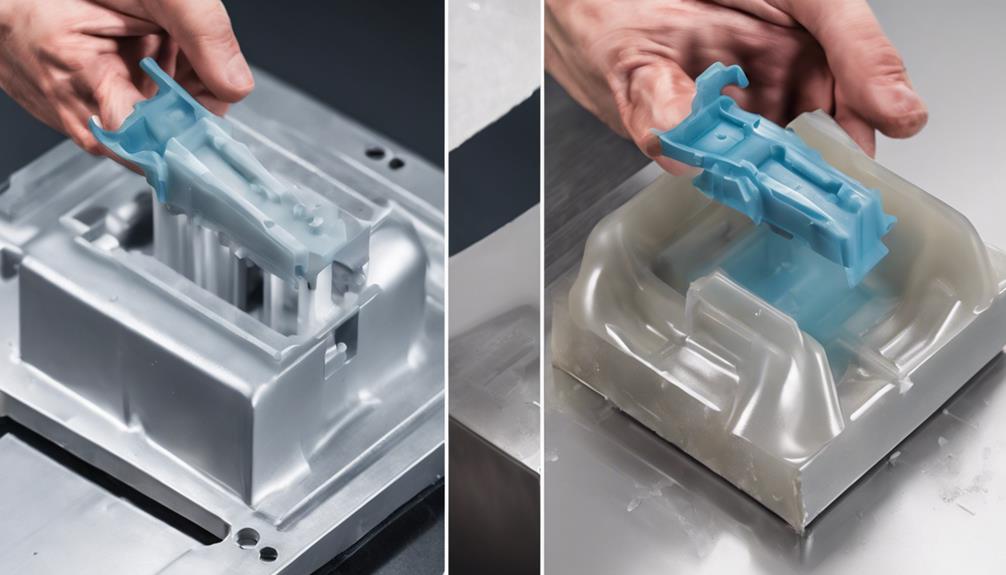
Ejection methods play a significant role in the injection moulding process by efficiently removing parts from the mold using ejector pins or plates.
Subsequently, finishing processes like polishing and dying are vital to guarantee that the final product meets the required specifications.
These steps are integral in preparing the components for packing and distribution to end users.
Ejection Methods Explained
Following the completion of the injection molding process, the utilization of ejection pins or plates becomes essential for the removal of parts from the mold, facilitating further processing and finishing procedures.
Ejection Methods Explained:
- Ejection pins or plates are essential for part removal.
- Ejected parts drop into a compartment or onto a conveyor belt for processing.
- Finishing processes like polishing or dying may be necessary post-ejection.
- Excess plastic removal is important to eliminate imperfections on the components.
Once the plastic components are ejected, finished, and any excess material removed, they are then prepared for packing and distribution to end-users. This meticulous ejection process ensures that the final products meet quality standards before reaching consumers.
Finishing Touches Overview
Upon the completion of the injection molding process, the meticulous attention to detail in the ejection and finishing processes plays a crucial role in ensuring the quality and appearance of the final components.
The ejection process involves the use of ejector pins or plates to efficiently remove parts from the mold, directing them into a compartment or conveyor belt for further handling. Finishing processes such as polishing or dyeing may be necessary to enhance the final appearance of the components.
Excess plastic removal is essential to eliminate any spurs or imperfections on the finished parts. Once the ejection and finishing stages are complete, the components are then prepared for packing and distribution to serve their intended purpose effectively.
Different Injection Moulding Types
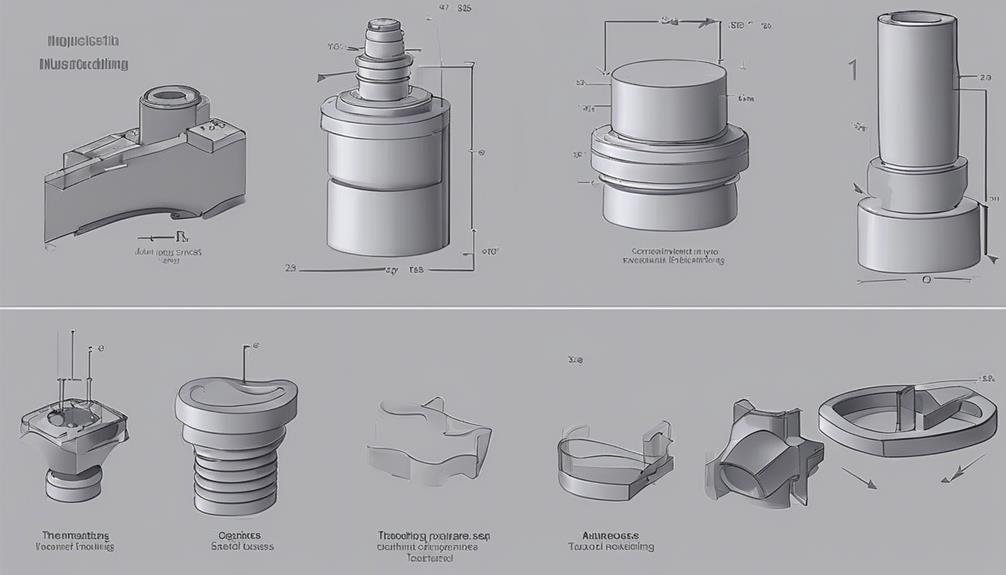
Cube moulding, die casting, gas-assisted injection moulding, liquid silicone rubber injection moulding, and metal injection moulding are various types of injection moulding techniques that offer distinct advantages in creating specialized products.
- Cube Moulding: Primarily used for creating small, cube-shaped plastic parts with high precision.
- Die Casting: Involves injecting molten metal into a mold cavity under high pressure to produce metal parts.
- Gas-Assisted Injection Moulding: Utilizes nitrogen gas to hollow out parts and reduce material usage.
- Liquid Silicone Rubber Injection Moulding: Enables the production of flexible and durable parts through the injection of liquid silicone rubber into molds.
Each of these methods caters to specific requirements, allowing manufacturers to choose the most suitable technique based on the desired product characteristics. Understanding the differences between these types of injection moulding is important for achieving excellent results in product design and manufacturing processes.
Pros of Injection Moulding
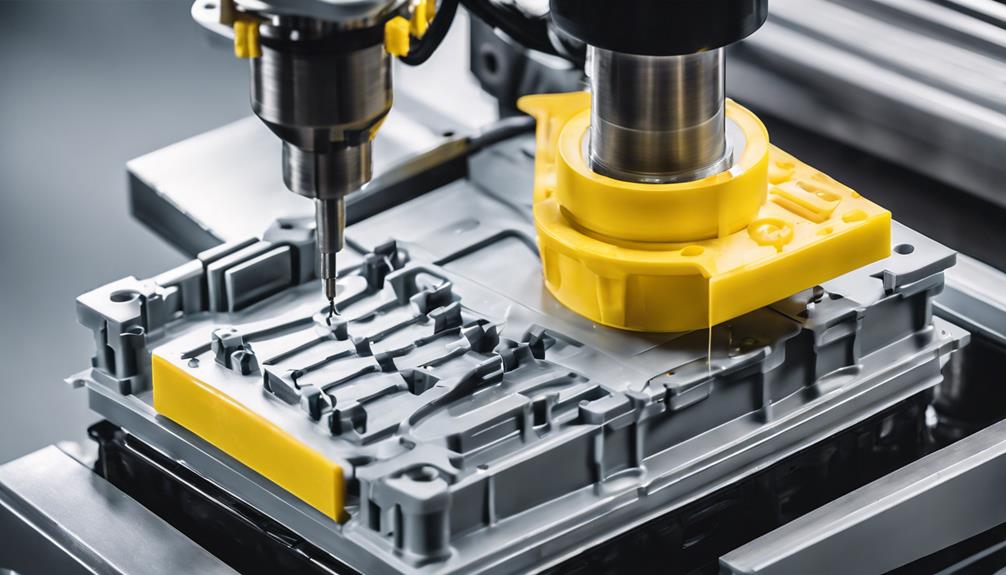
Injection moulding is a highly efficient manufacturing process that offers numerous advantages, making it a preferred choice for producing intricate parts with precise tolerances and a wide range of material options. One of the key advantages of injection moulding is its high precision, allowing for the production of intricate parts with small tolerances.
Additionally, the process provides a wide range of material choices, including options like antistatic plastic and thermoplastic rubber, making it a versatile manufacturing method. Injection moulding excels in producing small parts with various features, further highlighting its versatility.
Furthermore, the customization options in injection moulding are extensive, with the ability to incorporate color compounding and masterbatch coloring to meet specific requirements. These advantages make injection moulding a highly attractive option for industries seeking precision, material flexibility, versatility in producing small parts, and the ability to customize products to meet diverse needs.
Cons of Injection Moulding
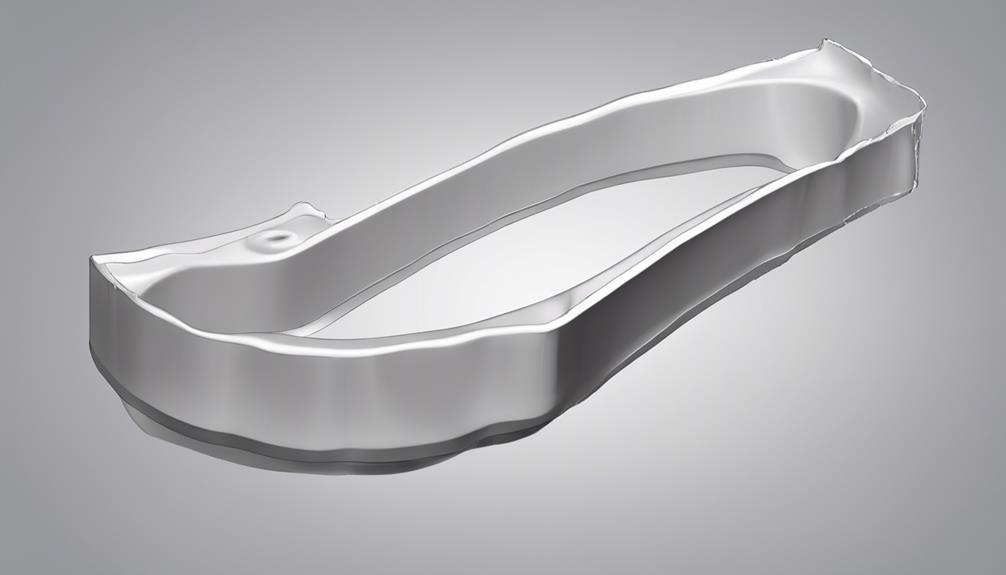
Facing potential drawbacks, injection moulding poses challenges that must be carefully considered in manufacturing processes. Here are some cons associated with injection moulding:
- High Initial Tooling Costs: Injection moulding can require significant initial investment in tooling, making it less cost-effective for small production runs.
- Waste Material: The process of injection moulding can lead to the generation of waste material, particularly during setup and color changes, impacting sustainability efforts.
- Complex Molds: Designs requiring intricate details can result in the need for complex molds, leading to longer lead times and increased production costs.
- Limitations in Mold Size and Material Selection: Injection moulding may not be suitable for very large parts due to restrictions in mold size and machine capabilities. Additionally, there are limitations in material selection, especially when specialized properties or finishes are required, which can limit design flexibility in certain applications.
Applications of Injection Moulding
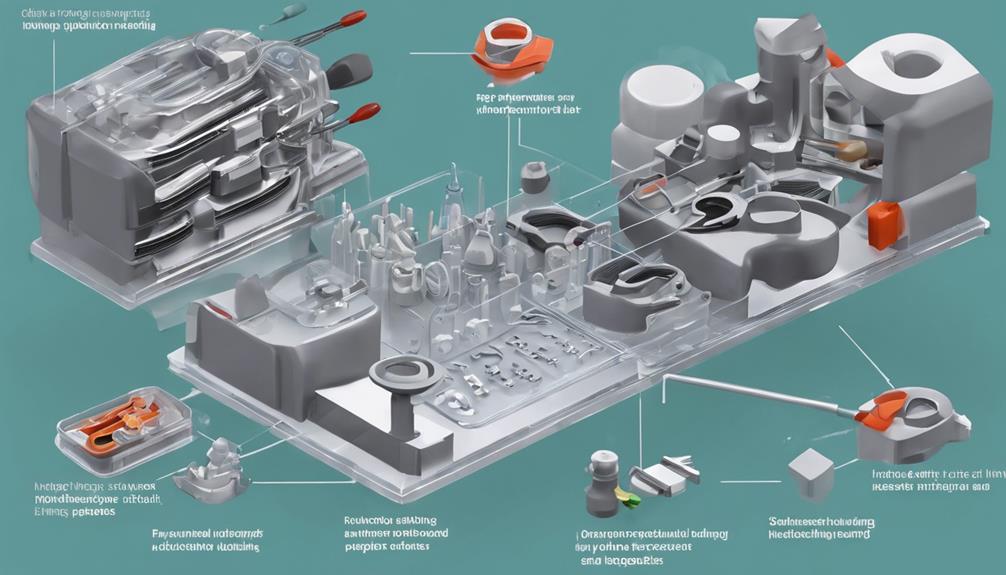
In various industries, injection moulding has proven to be a versatile and efficient manufacturing process for producing a wide range of components. In the medical field, this method is particularly valuable for creating intricate and precise medical components such as syringes and device parts. The ability of injection moulding to produce small parts with high precision makes it ideal for applications in medical equipment manufacturing. The table below highlights the key applications of injection moulding in producing medical components, emphasizing its role in meeting quality standards and regulatory requirements.
| Application | Description | Benefits |
|---|---|---|
| Medical Components | Production of intricate and precise components like syringes and medical device parts. | Ensures high repeatability and consistency, meeting quality and safety standards. |
| Small Parts | Ideal for creating small parts required in medical equipment. | Enables cost-effective mass production while maintaining tight tolerances. |
| Quality Standards | Ensures the production of sterile and biocompatible medical components with tight tolerances. | Essential for meeting regulatory requirements and maintaining quality standards in healthcare. |
Difference From Machining
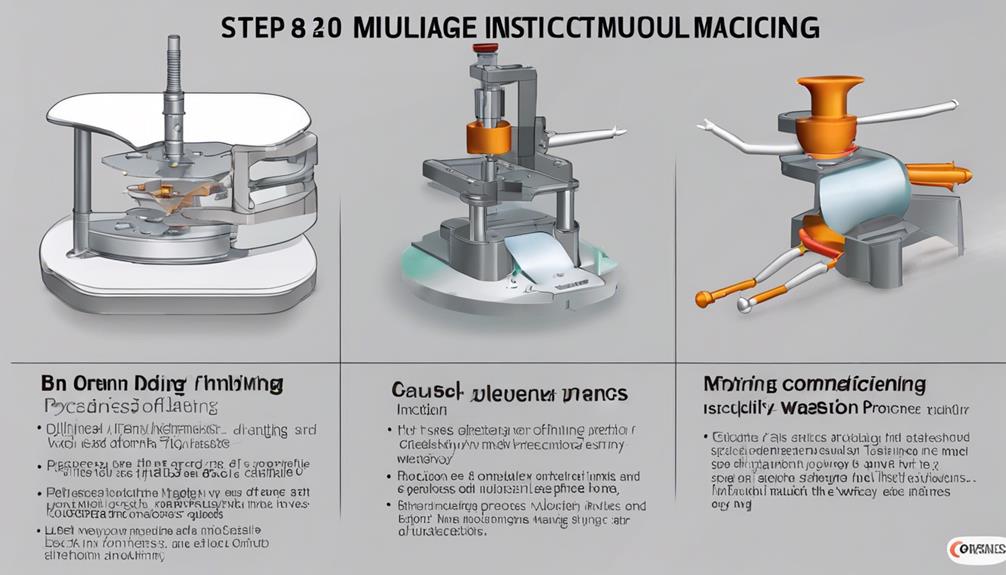
Occasionally, a notable distinction between injection molding and machining lies in their fundamental approaches to manufacturing processes.
Differences Between Injection Molding and Machining:
- Manufacturing Process: Injection molding involves injecting molten material into molds to shape parts, while machining subtracts material from solid blocks to create components.
- Suitability for Production: Injection molding is ideal for mass production of intricate parts with high precision, whereas machining is better suited for low-volume production and intricate designs.
- Approach to Precision: Injection molding relies on molds to shape molten plastic under pressure, ensuring consistent and precise part production. In contrast, machining involves CNC machines cutting material based on programmed instructions.
- Core Principle: The main difference lies in how the two processes build parts; injection molding adds material to form parts, while machining carves out parts from solid blocks.
Difference From 3D Printing
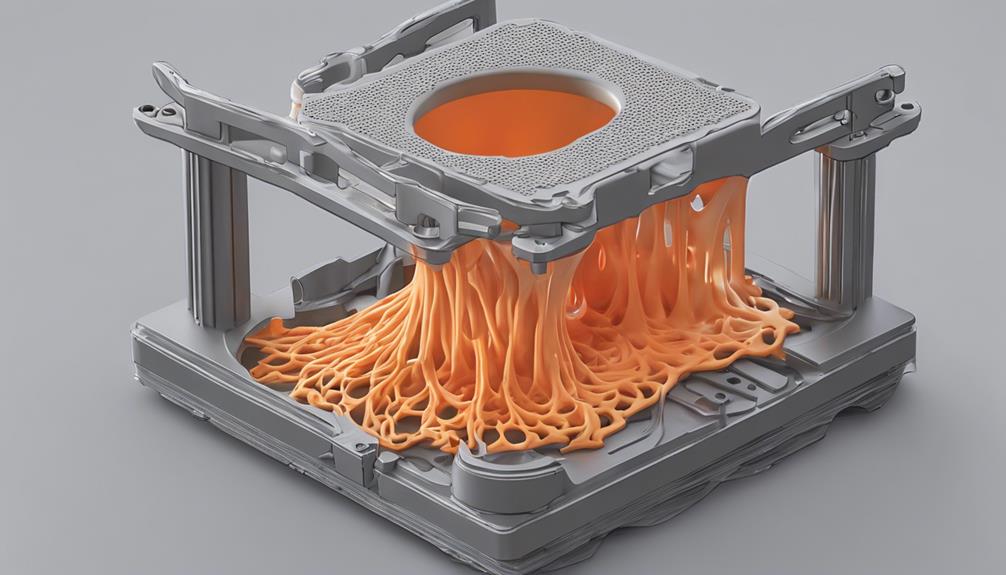
Injection molding and 3D printing differ notably in their manufacturing processes and material capabilities. Understanding the variations in process variability and the range of material options available between these two methods is essential in determining the most suitable manufacturing approach for a specific project.
Delving into the differences in these aspects will provide valuable insights into the practical applications and limitations of injection molding and 3D printing technologies.
Process Variability Comparison
Utilizing its precision in material flow and mold cavity filling, injection molding distinguishes itself from 3D printing by offering significantly lower process variability. The key differences in process variability comparison between injection molding and 3D printing are:
- Control Over Material Flow: Injection molding processes allow for precise control over material flow, leading to less variation in part properties.
- Consistent Part Quality: Injection molding guarantees consistent part quality and dimensional accuracy with minimal variation in each produced part.
- Repeatability in Parameters: The consistency of injection molding parameters results in less variation in part properties, making it ideal for high-volume production.
- Dimensional Accuracy: Injection molding provides superior dimensional accuracy compared to 3D printing due to its controlled molding process.
Material Options Overview
One notable distinction between the material options available in injection molding and those in 3D printing lies in the extensive range of thermoplastics and thermosetting polymers offered by the former, providing a vast array of customization possibilities for diverse manufacturing applications.
Thermoplastics like ABS, PC, and PP are commonly used in injection molding, offering durability and versatility unmatched by the limited materials used in 3D printing. The ability to combine materials in injection molding for specific properties and effects further enhances customization options, surpassing what is achievable through 3D printing.
With over 85,000 commercial plastic material options available for injection molding, including HDPE, LDPE, and ABS, manufacturers can select materials based on factors such as impact resistance, heat resistance, and recyclability to meet a wide range of manufacturing needs.
Choosing Injection Moulding Services
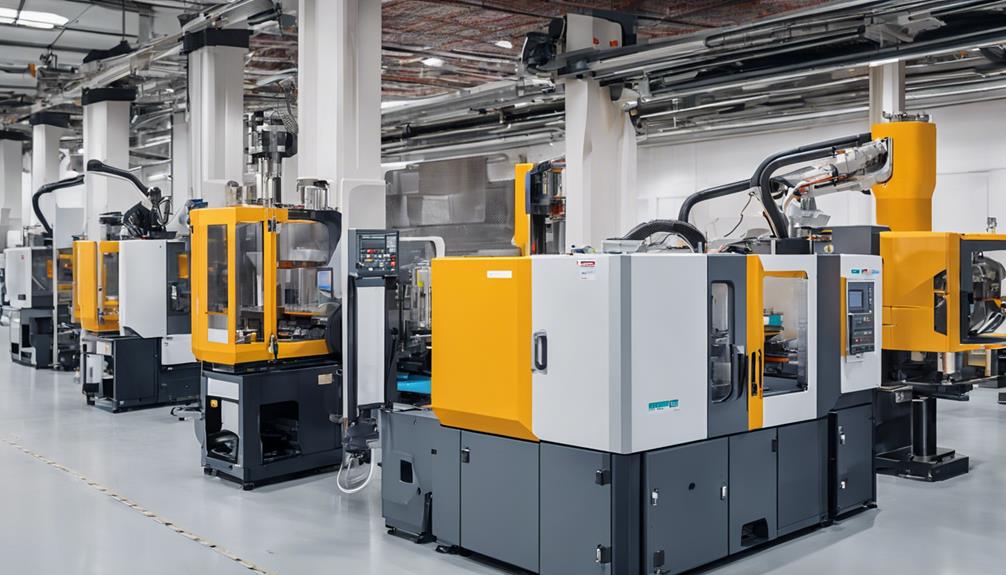
When selecting an injection molding service provider, it is important to carefully assess their experience, capabilities, material expertise, and cost-effectiveness to guarantee excellent production outcomes. Here are some key factors to take into account:
- Experience: Look for a provider with a proven track record in delivering high-quality plastic components. Experience indicates familiarity with various production challenges and the ability to meet specific requirements effectively.
- Capabilities: Evaluate the provider's equipment, technology, and production capacity to make sure they can handle your project's scope and complexity. Versatile capabilities allow for the production of a wide range of plastic parts.
- Material Expertise: Check if the service provider has expertise in working with the materials required for your project. Material knowledge is essential for achieving the desired quality and functionality of the final products.
- Cost-Effectiveness: While considering quality, also evaluate the cost-effectiveness of the service. Finding a balance between quality and cost is crucial for maximizing the benefits of injection molding services.
Choosing an injection molding service that excels in precision, versatility, experience, cost-effectiveness, and offers custom solutions will lead to successful production outcomes.
Reducing Mould Costs
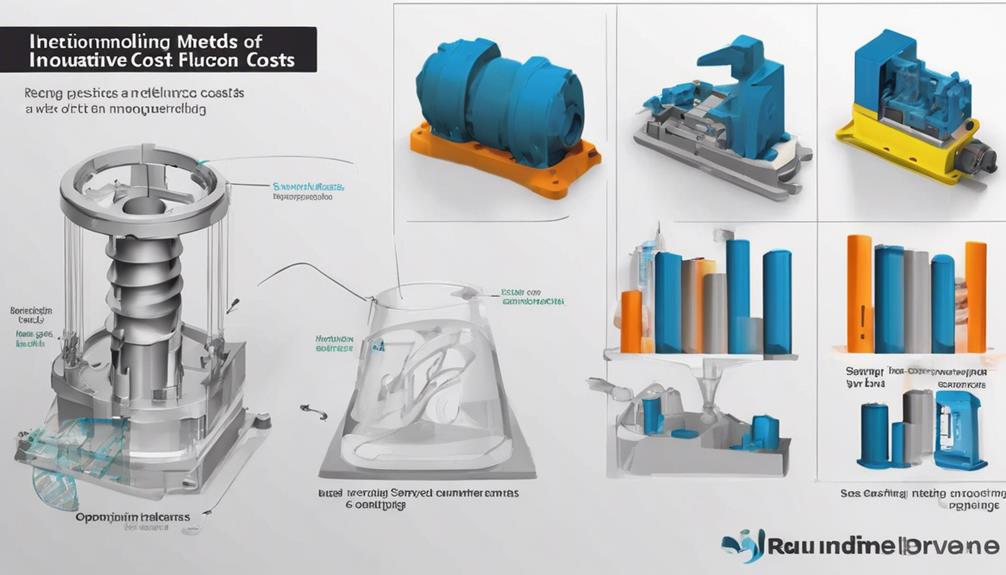
To enhance cost-efficiency in injection moulding processes, strategies such as undercut elimination, core-cavity design implementation, and the utilization of hot runner moulds can effectively reduce mould costs. Undercut elimination involves simplifying the part design to avoid complex features that increase manufacturing expenses.
Similarly, implementing a core-cavity approach in design streamlines production by reducing material usage and cycle times. Opting for simplified cosmetic finishes and self-mating part designs further contributes to cost reduction by minimizing the need for secondary operations.
Hot runner moulds play an important role in enhancing cost-efficiency by reducing the injection molding cycle times, thereby increasing overall productivity. By minimizing part complexity and considering assembly requirements during the design phase, manufacturers can greatly decrease the overall mould costs while maintaining product quality and performance.
These strategic approaches not only lower manufacturing expenses but also improve the efficiency and competitiveness of the injection moulding process.
Frequently Asked Questions
What Is Injection Molding and How Does It Work?
Injection molding is a manufacturing process where molten material is injected into a mold cavity to create a desired product shape. The material solidifies within the mold, allowing for the production of intricate and precise parts in large quantities.
This process relies on the careful management of parameters such as temperature, pressure, and cooling to guarantee the quality of the final product.
It is a versatile method used across various industries for mass production.
What Is the Injection Molding Process Step by Step?
The injection molding process progresses through several precise steps. Plastic pellets are fed into a heated barrel, melting due to a rotating screw. The molten plastic is injected into a mold cavity under pressure to acquire the desired shape.
Cooling solidifies the plastic in the mold, and the part is then ejected. Essential stages like holding, cooling time, ejection, and finishing processes, including removing excess plastic and polishing, guarantee proper part formation.
What Are the Fundamentals of Injection Molding?
Injection molding fundamentals are akin to the foundation of a skyscraper, providing stability and structure to the entire process. Key aspects include:
- Mold design
- Material selection
- Precise control of parameters like temperature and pressure
These elements are essential for producing high-quality parts with intricate details and tight tolerances. Understanding these fundamentals is vital for achieving successful outcomes in injection molding across various industries.
What Are the Basics of Injection Molding Machine?
The basics of an injection molding machine include:
- A feed hopper for plastic granules
- A screw mechanism to melt the plastic
- A heated barrel to maintain the molten state
The melted plastic is injected into a mold cavity, where it solidifies to form the desired component.
Advanced techniques like repeated injection and insert molding can be utilized for intricate part production, requiring specialized equipment and expertise for effective operation.
Conclusion
To sum up, injection moulding is a complex process that involves precise selection of materials, careful feeding and melting of thermoplastic, and accurate injection into molds. Despite its efficiency and cost-effectiveness, reducing mould costs remains a challenge for many manufacturers.
It is ironic that a process designed to streamline production can still pose financial obstacles. As industries continue to innovate and improve injection moulding techniques, the quest for cost-efficient solutions remains ongoing.
